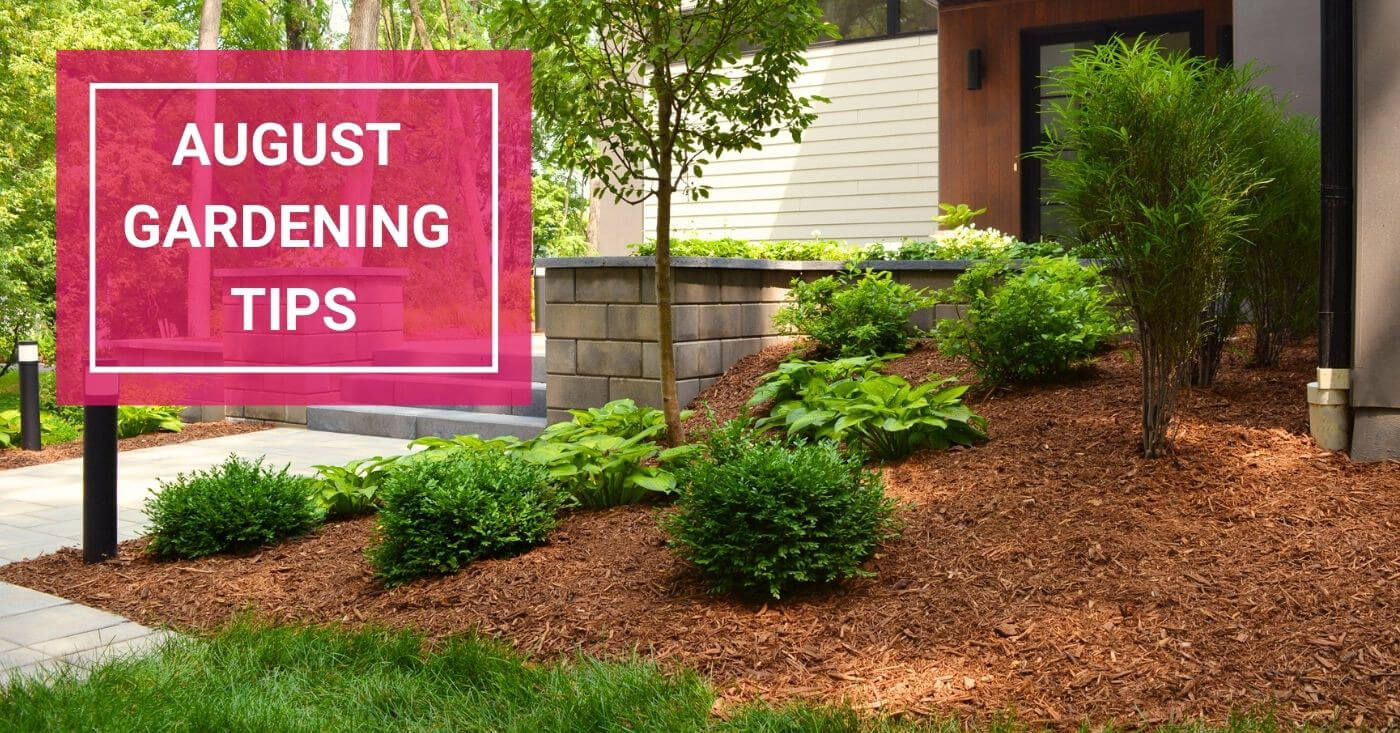As the scorching heat of August persists, nurturing your garden becomes an essential endeavor. Whether tending to newly planted saplings or nurturing well-established flora, maintaining optimal moisture levels is paramount. This blog will guide you through a spectrum of seasonal gardening wisdom, from nurturing perennials and annuals to plotting next spring's landscape design.
- Be sure to maintain good moisture levels on all new plantings and any established plants that may need additional water during the heat of the summer. Water plants early in the day rather than when the sun is at it's hottest to make sure water reaches the roots before evaporating. Also when watering, aim the water close to the base rather than the leaves, which reduces the chance of potential fungal issues.
- Spread organic mulch over the root zones of not only new plantings, but also older more established plants to discourage weeds and maintain moisture in the soil. Click here for tips on mulching.
- Newly planted trees and shrubs that show early fall color may be stressed from too little or too much water. A couple of plants this commonly occurs with are Burning Bush and Autumn Blaze Maple. The best way to see if a plant needs water or not is to touch the soil around the plant and make sure to water if it's dry 2" down.
- Mid-August to mid-September in the Midwest is considered the best time to establish a new lawn. Warm soils and cooler night temperatures coupled with more opportunity for rainfall makes for quick germination and development of bluegrass seed. During the first two weeks (that is how long it takes bluegrass to germinate) after the seed goes down, it will be necessary to lightly water each day during the middle part of the day to keep everything consistently moist to ensure the best germination. If the seed starts to germinate and you let the soil surface dry out, it can kill newly germinating seed. But maintaining light, even moisture is the key to excellent results. Remember to fertilize your newly planted lawns in late fall.
- Even established lawns benefit greatly from a fertilizer application in late August or September. Higher nitrogen fertilizers should be added later in fall, around October or November.
- Avoid pruning or fertilization of any of your nursery stock at this time, whether it was just planted in spring or fully established. Now is not the time to stimulate any new growth, so hold off on any pruning until October when plants go dormant.
- Mid to late summer is a great time to continue deadheading perennials and annuals to encourage the growth of new flowers.
- Early fall is a great time to start planning your landscape design for the following spring. Be sure to talk to your McKay design professional early to get on the schedule for a consultation.
- If you're maintaining a vegetable garden, late summer is the perfect time to harvest a lot of produce. Be sure to harvest crops such as tomatoes and melons regularly to avoid overripe fruit, which attracts picnic beetles. Harvest onions and garlic as the tops dry and fall over. Braid garlic tops and hang in a cool, dry place. Cut onion tops back to 1" and dry thoroughly before storing. Use any damaged produce immediately.
Looking for more plant-based knowledge? Check out our Green Tips Page: McKay Nursery Green Tips


